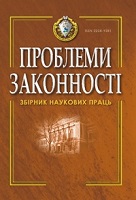Класифікація електронних (цифрових) слідів кримінального правопорушення
Classification of Electronic (Digital) Traces of Criminal Offenses
Author(s): Artem KovalenkoSubject(s): Criminal Law, Criminology, ICT Information and Communications Technologies
Published by: Національний юридичний університет імені Ярослава Мудрого
Keywords: criminal offense; electronic (digital) traces; computer data; electronic computing device; computer data carrier;
Summary/Abstract: With the further development of science and technology, the ways in which offenders use electronic computing devices while committing criminal acts are also changing. Each new method, each manifestation of illegal technology leaves behind specific traces, which in most cases are new for both theorists and practitioners. Identification, extraction and examination of each type of such traces requires unique approaches. Therefore, the task of forensic scientists is to divide the mentioned traces into varieties based on their essential and forensically significant features in order to further develop practical recommendations for working with them. Therefore, the purpose of this article is the formation of a forensic classification of electronic (digital) traces of a criminal offense. To achieve the goal, the methods of generalization, linguistic analysis, formal-legal, formal-logical, comparison, forecasting, analysis and synthesis methods, as well as activity and praxeological approaches in forensic science were used. The author singled out forensically significant features of electronic (digital) traces of a criminal offense and selected three groups of criteria for their classification: according to the features of the trace-forming object, according to the features of computer data as a trace, and according to the features of the carrier (media) of such data (trace-receiving object). Based on the first group of criteria electronic (digital) traces of a criminal offense are divided into varieties according to the trace-forming object; based on the second group of criteria – according to data formatting, according to data content, according to the method of information perception, according to data authenticity, according to the possibility of access; based on the third group – according to the location of the computer data carrier (media), according to the purpose and type of installation of the carrier and by the energy dependence of the storage device of the data carrier. In the author's opinion, scientific research on the further distribution of electronic (digital) traces of criminal offenses into subtypes and the formulation of practically oriented recommendations regarding their detection, collection, examination and use in criminal proceedings are promising.
Journal: Проблеми законності
- Issue Year: 2023
- Issue No: 161
- Page Range: 202-214
- Page Count: 13
- Language: Ukrainian

